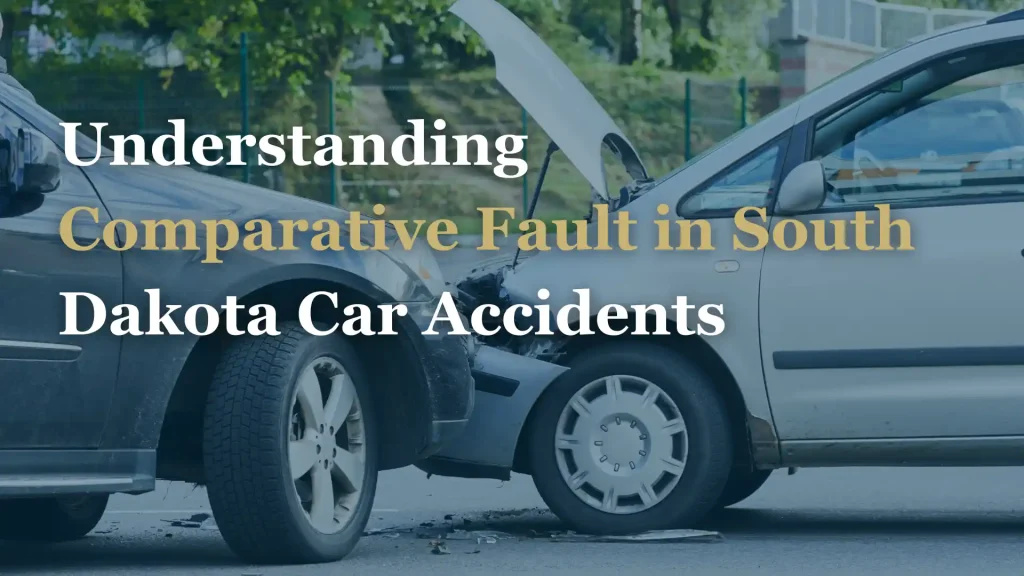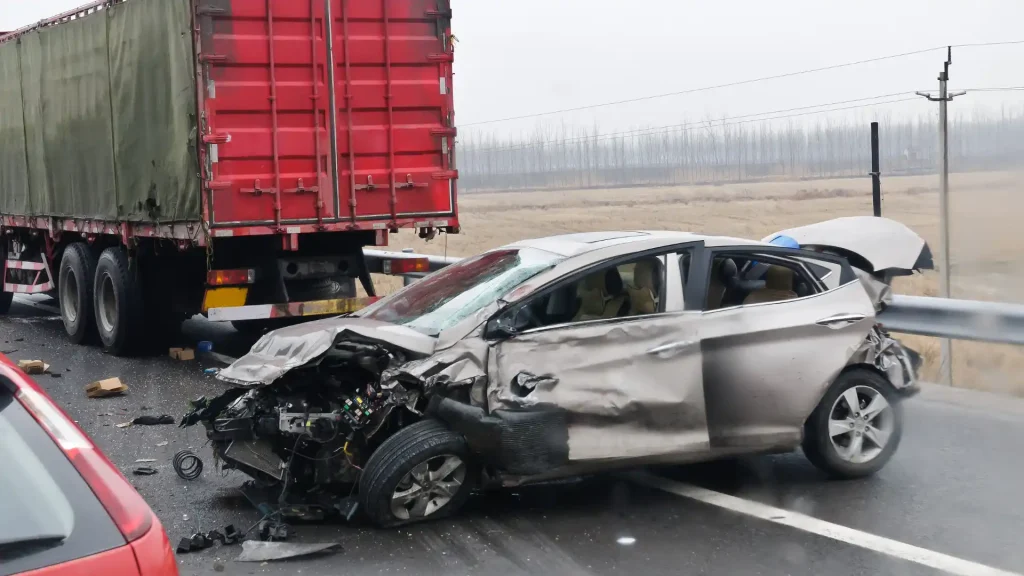 A Watertown car accident can physically affect your health and well-being. What most accident victims don’t expect are the significant emotional and financial tolls. What an accident can have on their lives. Beyond medical costs and repair expenses, there is the value of your lost wages, loss of earning capacity, and emotional distress. Recovering fair compensation for your injuries can be challenging, especially if you don’t understand how the Comparative Fault South Dakota Car Accidents laws may impact your claim.
A Watertown car accident can physically affect your health and well-being. What most accident victims don’t expect are the significant emotional and financial tolls. What an accident can have on their lives. Beyond medical costs and repair expenses, there is the value of your lost wages, loss of earning capacity, and emotional distress. Recovering fair compensation for your injuries can be challenging, especially if you don’t understand how the Comparative Fault South Dakota Car Accidents laws may impact your claim.
What is the comparative fault rule, and how does it affect Watertown car accident cases? A deep dive into civil lawsuit regulations can help you understand how to pursue maximum compensation for your injuries.
What Is Comparative Fault in South Dakota?
Comparative fault is a legal doctrine that courts use to determine which at-fault parties in an accident must pay the injured parties how much. Each state adopts fault rules using a comparative fault model or a contributory negligence system.
Comparative fault regulations typically allow an accident victim to recover compensation from a civil lawsuit, even if they are partially at fault for causing the accident. States can adopt a pure comparative negligence model, allowing individuals to recover compensation no matter how much fault they bear for contributing to an accident, or a modified comparative fault model that enables an individual to recover compensation, but imposes a threshold.
For example, in many states, anyone who is more than 50 percent responsible for contributing to the cause of a crash can be barred from recovering compensation for their injuries.
Comparative fault systems also work by reducing a person’s compensation by the same percentage the court finds them responsible for causing the accident. Compensation, therefore, diminishes relative to a person’s level of fault.
Contributory negligence is a stricter doctrine that typically prevents accident victims from recovering any compensation for their injuries if their actions played even the slightest role in causing a crash.
However, South Dakota’s comparative fault laws are unique. South Dakota law dictates that drivers “slightly” at fault for causing an accident can still recover compensation for their injuries from the other driver. However, that compensation diminishes by an amount equal to the percentage of fault. If a motorist’s actions are not “slight,” they are prevented from recovering compensation for their injuries.
South Dakota’s unique variation of comparative fault can be confusing because there is no set definition of “slight.” Instead, the judge or jury evaluates the evidence in the case and makes its own determination of “slight” based on the specific circumstances of the crash.
How Comparative Fault Impacts Accident Claims
Comparative fault impacts a car accident case because compensation diminishes based on a driver’s portion of fault for causing the collision. Under South Dakota’s gross/slight comparative fault system, compensation gets reduced by the same percentage as the person’s level of responsibility for causing the crash.
For example, if the court finds someone ten percent responsible for the collision, their compensation diminishes by ten percent. Understanding how Comparative Fault South Dakota Car Accidents are handled is essential to pursuing fair compensation.
South Dakota’s slight/gross comparative fault system is binding in car accident lawsuits. However, it can also influence how an insurance adjuster assesses the value of your claim. You must understand this rule, even if you aren’t initially planning to file a personal injury lawsuit after a Watertown car accident.
Fault is crucial in car accident cases. The party who is at fault is responsible for their actions and must compensate victims for their injuries and losses. Recovering maximum compensation in a civil lawsuit means building a solid case backed by evidence establishing liability and proving fault. Proving fault can be significantly more challenging in cases involving multiple-party faults in car accidents.
Proving Lower Fault to Maximize Compensation
 There is no strict legal definition of “slight,” and the court determines it on a case-by-case basis. Therefore, you need an experienced Watertown car accident attorney who can build a compelling case and help you prove lower fault to maximize compensation.
There is no strict legal definition of “slight,” and the court determines it on a case-by-case basis. Therefore, you need an experienced Watertown car accident attorney who can build a compelling case and help you prove lower fault to maximize compensation.
Recovering maximum compensation comes down to proving that the other driver is liable for your injuries and more at fault for causing the accident than you are. That takes evidence. The quantity and quality of the evidence in your case influence the situation’s outcome.
With the right evidence, you can recover meaningful compensation for your injuries. Evidence that may help support your case in court can include:
- Police report
- Witness statements
- Photographs and videos of the scene
- Medical records
- Phone records
- Surveillance video or traffic camera video
- Expert witness testimony
However, collecting and preserving evidence can be challenging if you’ve experienced significant injuries following a crash. You may be unable to gather the information you need without help. You need someone with legal and practical experience and resources to find evidence.
That evidence must be compelling enough to demonstrate to the court that your actions had little to do with causing the crash and that the at-fault driver bears the brunt of the liability. Understanding how car accident liability works in South Dakota can help strengthen your case and ensure you pursue the compensation you deserve.
How a Watertown Attorney Can Help?
Often, drivers avoid seeking legal help after a car accident because they worry about how their actions may influence their claim or a lawsuit. Navigating South Dakota’s unique comparative negligence rules can be confusing. Instead of settling for a lowball offer from an insurance company, speak to a Watertown car accident lawyer with Turbak Law Office, P.C.. We can explain your legal rights and options for pursuing maximum compensation for your injuries.
Call our Watertown office today at 605-886-8361 or contact us online and request a free, no-obligation initial consultation. We don’t ask for anything upfront, and you don’t pay unless we recover compensation in your car accident case.